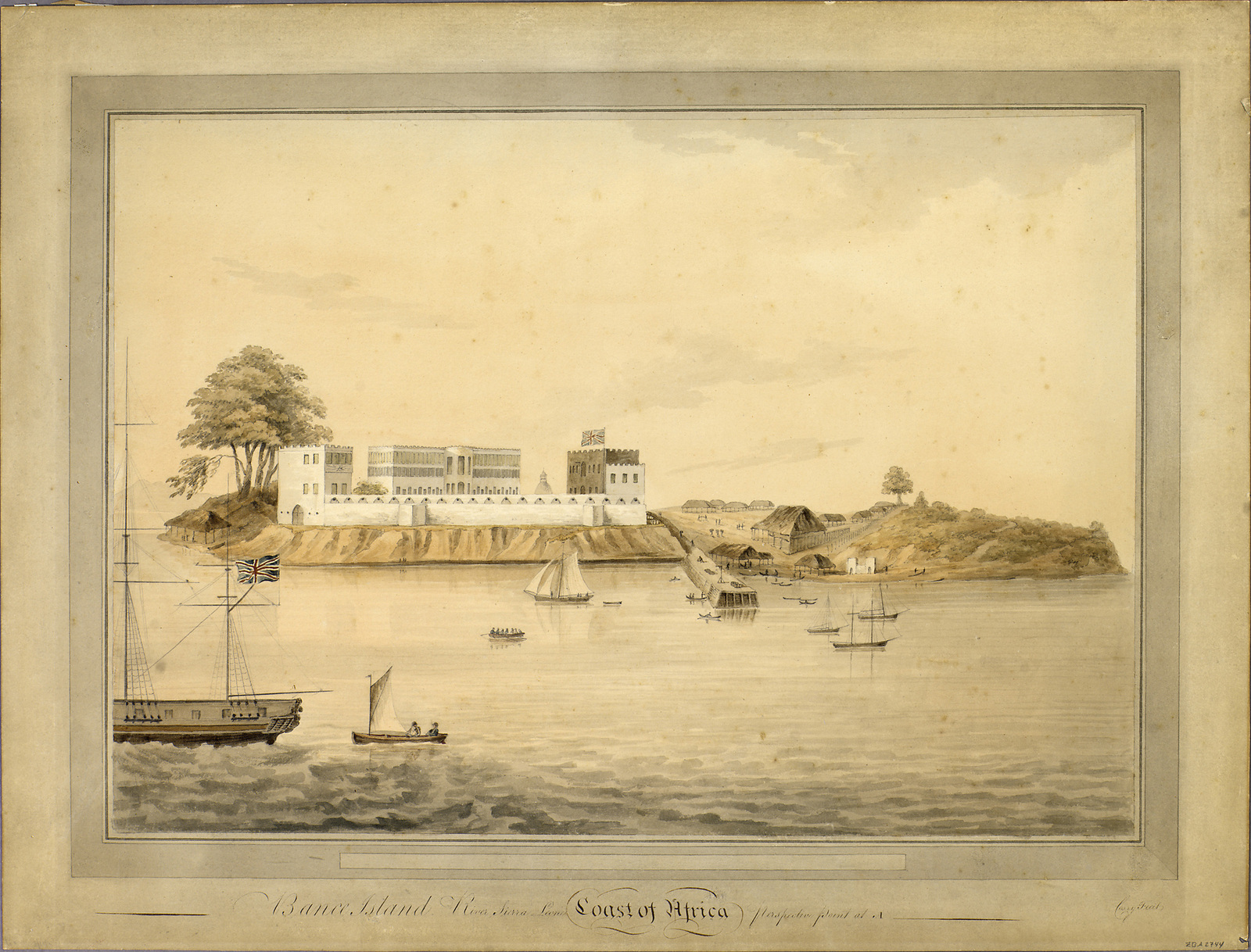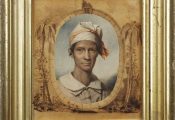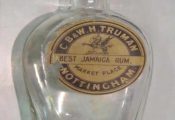This is a watercolour drawing from around 1805. It shows the slave fort on Bunce Island at the mouth of the Sierra Leone River in West Africa. The Royal Africa Company first established the fort but from the 1720s it fell into disrepair as the company declined. It was purchased by a firm known as Grant, Oswald & Co. in 1748, and they began to repair the fort as a slaving base. Bunce Island was ideally situated for the slave trade. It was in a safe location, with good natural resources, and had easy access to the African traders on the coast. African traders brought the enslaved to the fort where they were exchanged for European goods.
The slaves were imprisoned until a slave ship took them to the Americas. Between 1749 and 1773 Grant, Oswald & Co exported over 12,500 Africans from Bunce Island. Dozens of people also lived in the fort, including European employees of the company (many of whom were Scottish) and many Africans who were responsible for overseeing and running the trade. For their entertainment, they built the first golf course in Africa, although it had only two holes. The mainland opposite Bunce Island at the mouth of the river became the location for the first utopian settlement of free Africans in Sierra Leone, operating under the frankpledge system advocated by Granville Sharp.
© National Maritime Museum, Greenwich, UK
Accession reference: National Maritime Museum, ZBA2744



